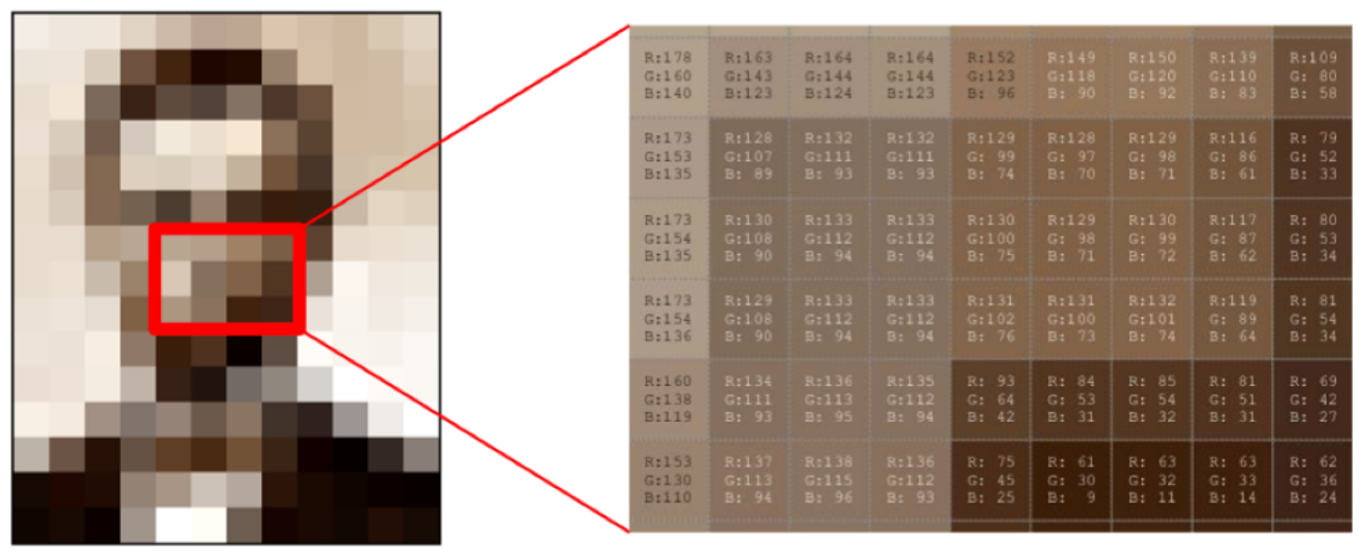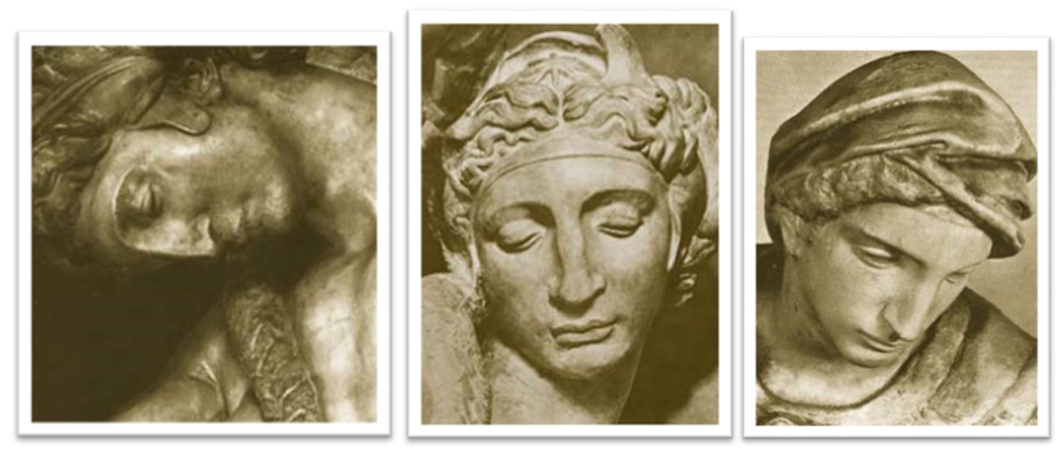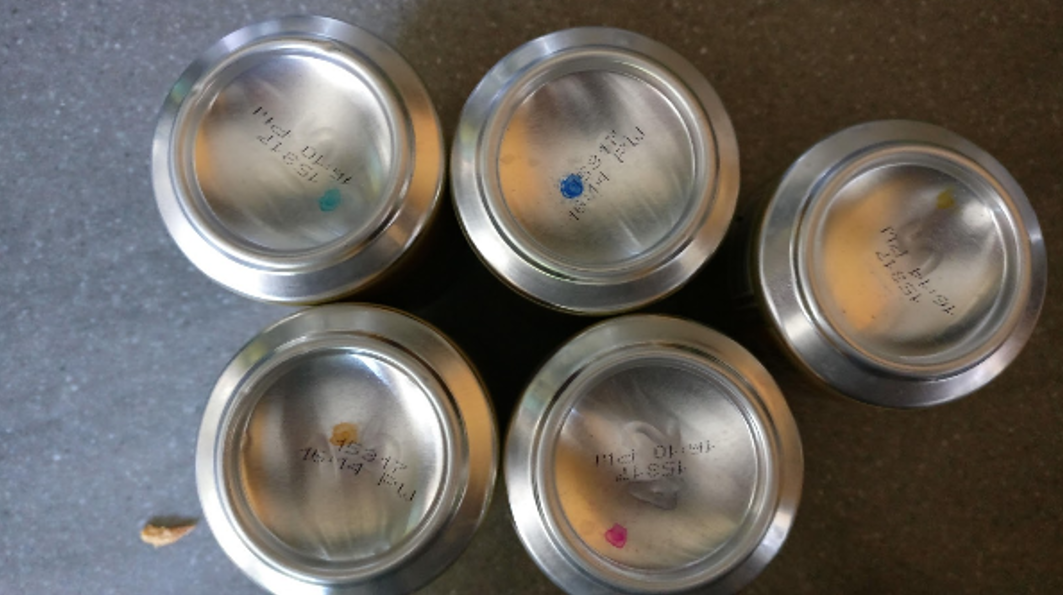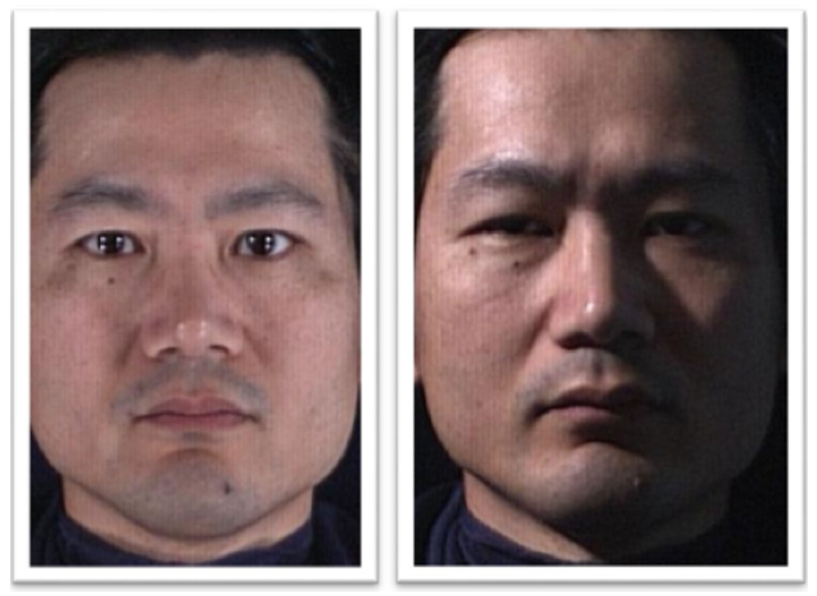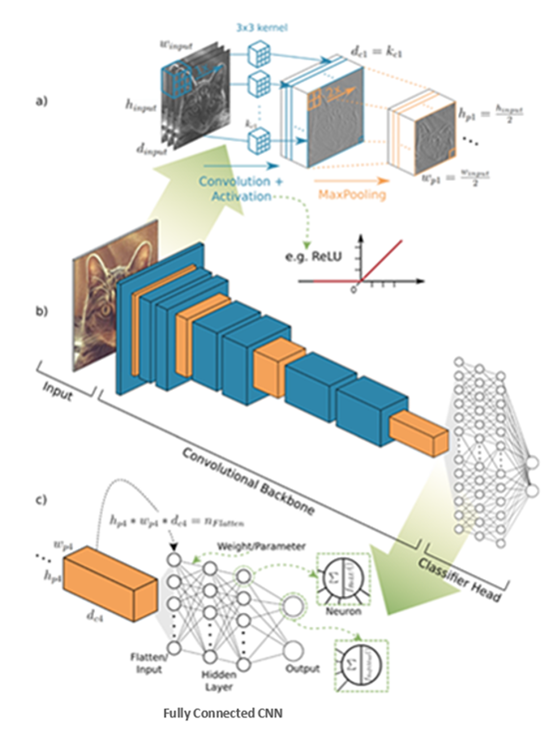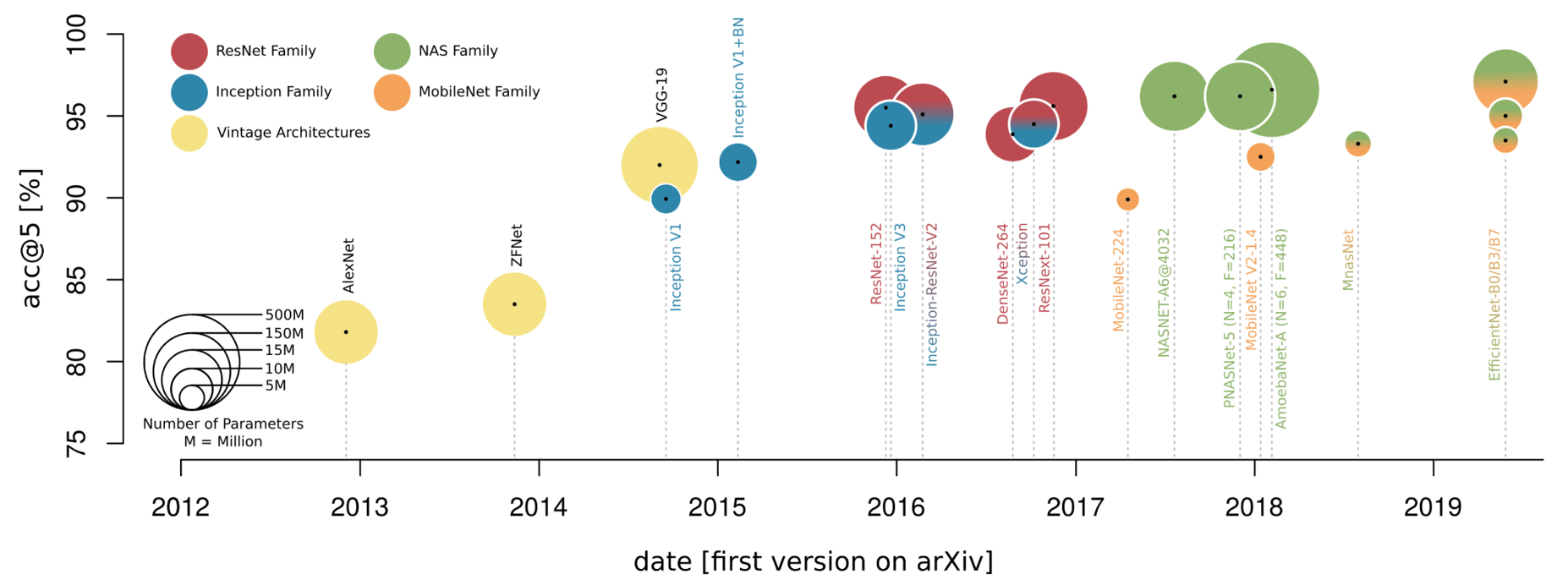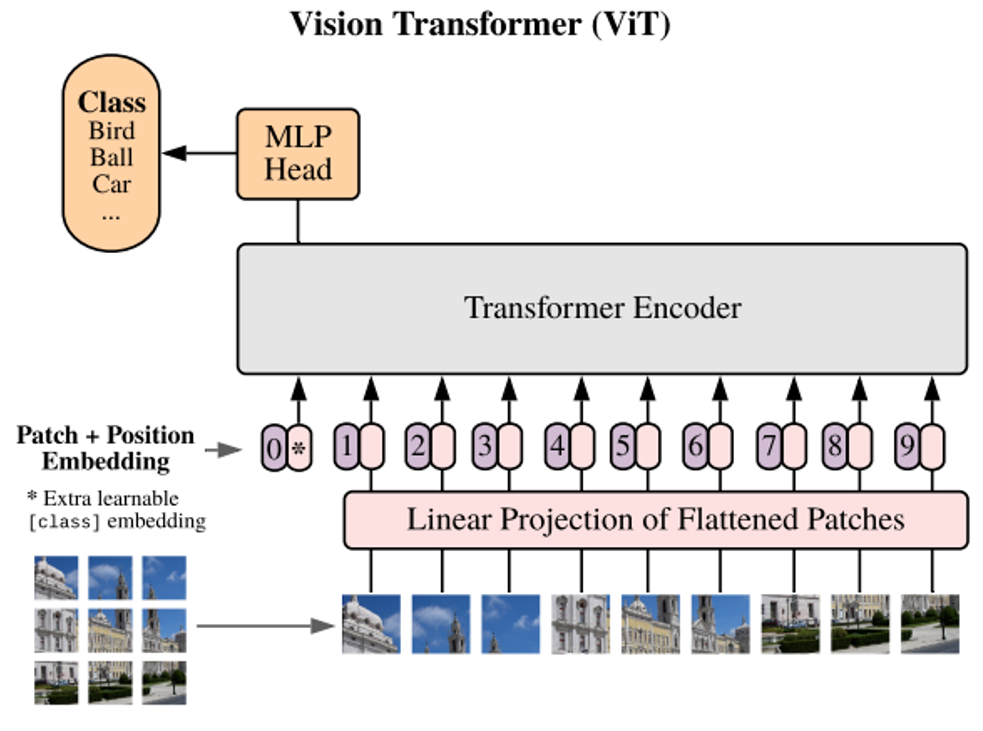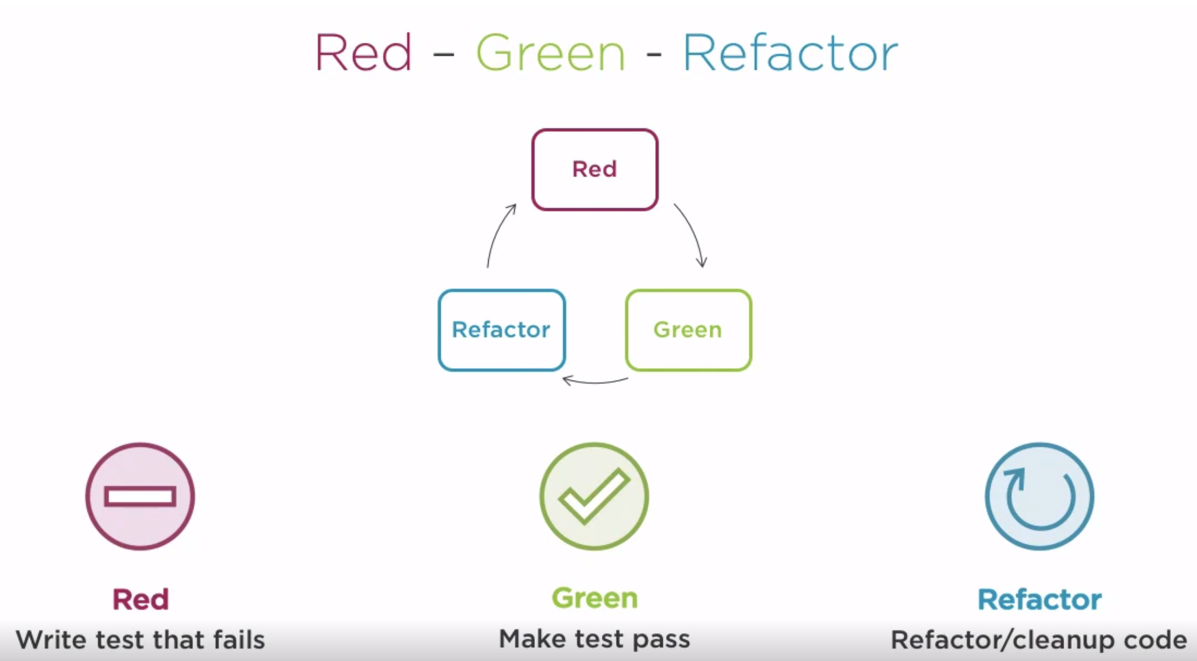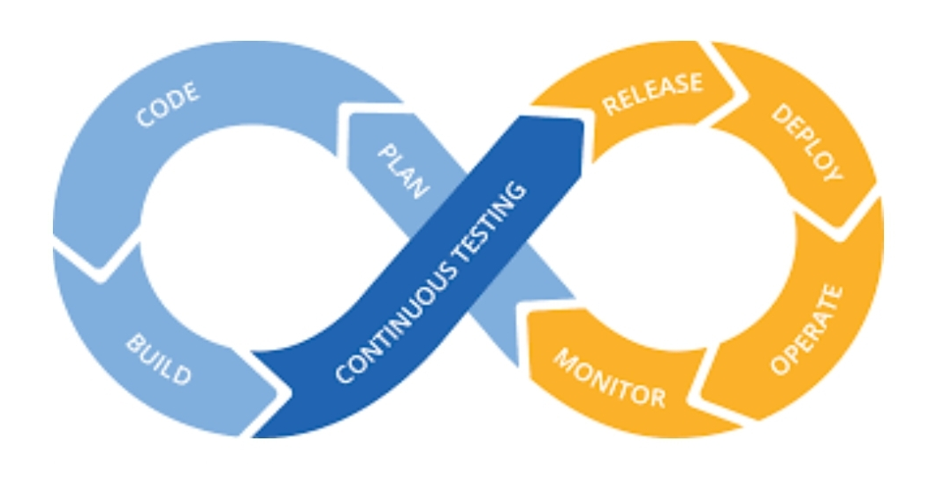Eh Sayers Episode 14 - I Got 99 Problems But Being Misgendered on the Census Isn't One - Transcript
Transcript
Cyril: Molly knew from experience that dresses were trouble. Dresses have tight places and zippers you can’t reach. Dresses mean troublesome tights and fancy shoes with no purpose. Dresses with no pockets mean nowhere to put interesting rocks, and nowhere to keep dog treats in case you find a stray. Dresses were not right on a regular day and they were definitely not right for something as important as picture day!
Tegan: (Stage whisper) Welcome to Eh Sayers a podcast from statistics, Canada, where we meet the people behind the data and explore the stories behind the numbers. I'm your host, Tegan Bridge, and I'm whispering because we're listening to drag story time. Shh!.
Cyril: Molly wanted to look like she was going on an adventure, not like she was going to a tea party. But she had an idea to save picture day. Her brother’s old tuxedo! It was perfect.
Dashing. Comfortable. Plenty of pockets. She had tried it on once when he was at chess club. It fit just right then, and Molly was sure it would look just as great today!
Tegan: You just heard part of Molly’s Tuxedo by Vicki Johnson, in which Molly has to decide whether to wear the dress her mom picked out for her school picture day or the tuxedo she wants to wear. It’s a book which explores gender in a kid-friendly way. You might hear Molly’s Tuxedo read at a drag story time, and if you’re in the Ottawa area, you might just hear it read by Cyril Cinder.
Cyril: My name is Cyril Cinder, and I'm an Ottawa based drag performer and drag king who has been performing since 2014.
Tegan: What's a drag king?
Cyril: Drag kings are drag artists who present or perform a masculine persona as part of their drag performance. That might involve parody, exploration or expansion of masculine gender norms and performance types. Um, they can be, you know, suave, they can be comedic, they can be big and extravagant and super over the top. Drag kings can be absolutely anyone and everything.
Tegan: Where does the name Cyril Cinder come from?
Cyril: Uh, I named myself in drag. That's not always a thing that happens. Sometimes you are given a name, but in the Canadian scene, usually we pick our own names, and I kind of wanted to sound like the alter ego of a super villain. So, and alliteration sounds cool. So I went with Cyril Cinder. I didn't wanna choose a pun name because I didn't trust myself to be clever enough to come up with something that nobody else would come up with. And the great benefit of it has been that it's also appropriate for all ages. It just sounds cool.
Tegan: I love it. What kind of performances do you do?
Cyril: I tend to lean into the age-old tradition of drag, which is the lip sync performance. I perform a lot in bars or in very different venues, music venues. I'm also a story time performer, so I will entertain and read books to children and audiences and families of all ages. I'm also a speaker and travel to conferences to talk about what I do as a drag performer, the increase attacks against the 2SLGBTQIA+ community in Canada, and how that does tend to specifically target drag performers, as well as mental health because I also work as a registered psychotherapist.
Tegan: We mentioned drag story times at the top of the show. Why are drag story times important?
Cyril: For me, drag story time is a couple of important things. I mean, right off the bat, it's a pro-literacy initiative. Whenever you're doing something to make reading look a little bit more fun, you are encouraging children to be more interested in reading, to be more excited about books, and literacy is such an important foundation of our society. But the other part is that it's also an anti-bullying initiative, right? Whether or not we are, you know, exposing kids to a positive queer role model for the first time, or to someone who's maybe a bit more gender nonconforming, doesn't quite match the boys and girls archetypes and binaries that they're often exposed to at home and at school and in media. It's an opportunity for them to see that and see that that's not that strange actually, that that's okay, that there's nothing too weird about being fabulous and sparkly and excited and fun. And if we can introduce children to positive role models of all different kinds of diversity at a young age, as they get older, that becomes less and less of a axis of difference for them, something for them to isolate or pick out about their peers and say, oh, you're not like me in this way. It becomes something that they can say, oh yeah, there are people like this. This is normal. This is okay.
Tegan: You mentioned binaries and archetypes for little boys and little girls. Could you say more about that? What's the gender binary and why is it a problem?
Cyril: So the gender binary is the idea that there are only two genders. Gender is distinct from sex.
Sex is a series of biological characteristics. Sex is also not an actual binary between male and female, and we don't only see this non-binary nature of sex represented in the human species, but in multiple different species. So that is just to say that there are many, many different biological expressions that don't fit within the male-female solid archetype.
Gender is a different thing than sex, though. Gender is an experience of one's gender, role, and identity within society: the concept of being masculine, feminine, androgynous, the idea of rather than being male or female, of being man or woman. And as much as the archetypes and binary roles of male and female don't capture the full breadth of the experience of sex, the binary of woman and man also doesn't capture the full breadth of experience that humans can have of our gender and of our gender identities.
The gender binary can be used to control people. It can be used to force people into things that they don't want for themselves, right? We can see very strong, uh, expectations on men, for example, on what kind of emotions they're allowed to show, what kind of careers they're allowed to pursue, how they're supposed to feel about caretaking or sex or power or any of these things. And these are equally damaging to people of all genders. You know, women get told not to be too bossy, uh, that they're over emotional, that they can't be trusted to make decisions or be in positions of leadership, right? These sorts of boxes that we force people into. And people who don't feel like they fit into either of the binary gender options, male or female, people who fall under the very large umbrella of the non-binary spectrum really also deserve to have their experience of gender understood, respected, and validated.
Tegan: What are your preferred pronouns?
Cyril: Yeah, so I actually identify as non-binary out of drag, but my drag character, Cyril Cinder, is a man that is the gender identity of that character. So in drag, I exclusively use he/ him pronouns, but out of drag I use she/he/they pronouns. Any pronouns really I'm comfortable with. But whenever I'm referring to Cyril Cinder, the drag character, I always prefer to use he/him.
Tegan: Is it a challenge living as an out non-binary person?
Cyril: It can be. I think I certainly don't experience certain challenges that other people who might hold the same identity of non-binary as, as me actually experience, um, because of my flexibility with pronouns, with the she/he/they. I am comfortable if someone, you know, defaults to she looking at me because I was assigned female at birth and I, you know, when I'm not in drag, do have a somewhat feminine gender presentation and someone looks at me and goes, ah, a woman. It's not correct, but it's also not like the worst thing in the world for me.
At the same time, other people for whom that would feel really actually quite distressing and upsetting and invalidating for them. I think they face a greater challenge, right? Someone who exclusively uses they/them pronouns who might constantly have to correct people who would default to he or she or might overtly refuse to use their pronouns because of a belief that they have and a subsequent then desire to invalidate that person.
And that's really hard because then you're moving through the world and you're trying to tell people who you are. We have this innate human desire to be seen by the people around us. We are a social animal. We exist in a society. We don't do well independently on our own. We're not built for that. So when you're trying to say to someone like, “Hey, this is who I am!” And they go, “No, you're not. I know you better than you do, and in fact, this thing that you're doing, it's really a problem. It's really dangerous. It's really bad actually, and you should feel shame for that.” That's not an experience anyone seeks to have when they're trying to order a coffee or talk to their boss or just go about their day and go about their life.
Tegan: You're a drag king. You're a performer, and I think it goes without saying that drag is a performance. In what ways is all gender a performance?
Cyril: So gender is performance. It is something that we put on whether you are choosing to wear a dress or a three-piece suit or both at the same time. You were saying something about what feels right to you about who you are, about, you know, just different little elements of yourself that we can express in little ways, and that might be through comparison, through contrast, through exaggeration, through celebration. We're all doing little things and all of those expressions are a completely valid way of looking at everyone's individual experience of gender.
We have gender identity, we have gender expression. Those are also two different things. How someone identifies in their gender might be different than how they express it. I'm non-binary. And so that's my gender identity, but I have a very feminine gender expression. I also can exhibit a very masculine gender expression. That's quite fluid for me. That moves around a lot. Not everybody might have the same experience, but it's, it's important to be able to articulate these different parts of it because we're only just enriching our understanding of the human experience.
Tegan: A good friend of mine whenever he needs someone who looks at the world in a very different way than he does. He pauses and gets a thoughtful look on his face, and he says, “Life is a rich tapestry!” The human experience and the diversity of that experience certainly is a rich tapestry. Gender identity, especially, is fascinating. But it's not something that we here at stat can have measured. Until now.
Tegan: Why was the 2021 census a big deal?
Anne: Well, I would say each census is a big deal. The 2021 specifically, in terms of gender, is because it was the first time that we asked the gender question on the, on the census.
Tegan: This is, of course, our resident census expert.
Anne: I am Anne Milan. I am chief of the Census Demographic Variables Section in the center for Demography at Statistics Canada.
Tegan: Yeah. So you said it's the gender question. Could you elaborate? So what's different about the 2021 census that we didn't ask before?
Anne: There's two, two main changes. There is a precision of “at birth” added to the sex question, and the question on gender is completely new. So that asked someone to identify whether they were male, female and there was an “or please specify” category where persons could write in their response.
It was historic to, to include this information. It's the first time that, census data was released on the transgender and non-binary population among all the countries around the world. And so we're very proud of that.
Tegan: The census allowed people to write in whatever gender identity they would prefer. Why do that instead of boxes to tick?
Anne: With the gender question, we felt that having a write-in, or please specify this person's gender, was the most respectful and inclusive strategy to use so that people could select the gender that was most relevant to them.
Tegan: Do you have any idea how many different genders people put?
Anne: There were many.
Tegan: Many.
Anne: There were many,
Tegan: Many is a valid answer.
Tegan: Putting a blank space allowed respondents to describe themselves as they saw fit. And they did. StatCan uses the term non-binary as an umbrella term, but that's not necessarily how everyone describes themselves. Almost a third of those under this rainbow coloured non-binary umbrella used at different word to describe their gender: androgynous, bigender, intergender, pangender, polygender, queer, and two spirit. These were all terms provided by census respondents, but to be sure these weren't all of them. As Anne said, there were many many more.
Anne: If there was no gender question before, they wouldn't have had that opportunity to select their own gender. And that was one of the things that we noticed with the 2016 census when we were reviewing the comments that, uh, that people had put in, they were saying that the sex question, which had been there for many census cycles, was not precise enough for their needs. So some people felt that they were excluded. And of course, the goal of the census is to count all Canadians and have everybody see themselves in the data.
Tegan: Why is it important that people see themselves in the data?
Anne: Well, I think the, the census is a count of the total population in Canada. So of course it's important for people to see themselves in the data. We want people to have that experience and to feel that this information is relevant to them, that they're counted, that their voices matter. So really, that's the goal of the census: to include everybody and to have everybody feel included.
Tegan: So you said that people gave feedback in 2016, uh, saying that the census wasn't, asking necessarily the right question. Is that where the idea came from to make this change?
Anne: It was part of it. Each census cycle, we review all of the content, all of the questions, all of the definitions, and as part of that content determination process, there's an extensive consultation and engagement that takes place almost immediately after any census. And one of the common responses was that, gender was an information gap that, uh, that was needed.
And so following that, we had some more specific focus groups, individual, in-depth conversations. And this included all Canadians, cisgender, as well as transgender, non-binary persons. And so we, we took all that information into account. We developed the new content.
Tegan: What have we learned? What do the stats say about gender?
Anne: One in 300 Canadians aged 15 and over living in private households were transgender or non-binary individuals. Numerically, this is about a hundred thousand, so about 60,000 were transgender persons and about just over 40,000 were non-binary persons.
They tend to be younger on average than cisgender persons. So just to give you an idea about two thirds are less than age 35, so between age 15 and 34.
Tegan: There really is quite an age difference. Among those who were between 15 and 34, about one in 150 were transgender or non-binary. For those who were over the age of 35, it was only one in 550. That means, proportionally, there were more than three times as many transgender people aged 15 to 34 as there were 35 and over.
Anne: And it might be that, you know, younger people are more comfortable reporting their gender. From a generational perspective, attitudes and behaviors of a particular generation are informed by historical context in which they're raised. So age differences were a big trend that we noticed.
Tegan: How comfortable people are reporting their gender on an official government form was something Cyril cinder mentioned as well.
Cyril: I think a lot of people in the 2SLGBTQIA+ community are still somewhat apprehensive or nervous to, you know, really tell the government, yes, I am transgender, or, yes, I am non-binary due to historical systems of oppression and how they have impacted those communities.
Tegan: Age differences weren't the only notable finding in the data.
Anne: There were also regional differences. So, for example, among the largest urban areas, what we call census metropolitan areas, Victoria, Halifax, and Fredericton really stood out. And these three large urban areas had certain elements in common. They had stronger population growth between 2016 and 2021 compared to the national average. They had larger shares, 15 to 34 than the national average. And they're all home to several major universities and colleges. And of course students tend to have a, a younger age profile.
So those are some of the high level findings. And we were so pleased with the reaction to the information. It was overwhelmingly positive. And so we were very, very proud of that.
Cyril: I think it's so important. I mean, other levels of government, we are recognizing that transgender and non-binary people exist, right? We have the option for different gender markers, on our IDs, and, you know, normally when you go to a doctor's office, or you fill out any other demographic form, you're gonna have an opportunity to indicate what your gender identity is. And when we're talking about something as large-scale as the census, which drives so many of the decisions that we make at various levels of government. It informs, you know, grant money, who's getting what, how many resources need to be allocated to which communities. It's important to have an accurate measure of those communities. You know, Canada was the first country to include this in the census, but these calls have been going on for over a decade to be able to access this information.
But even just asking the question, it, it indicates that the government does care about transgender and non-binary Canadians, that our experiences are important and that we are part of Canadian society.
Tegan: From your perspective, now that we have these data about transgender Canadians, what should we do with it? How can it be put to best use? And what would your hopes be for next steps?
Cyril: Mm-hmm. I think some of the important things is, is being able to use this information about like where are resources needed in particular, right. I was looking through the data and things like the vast majority of non-binary people live in six urban centers in Canada.
Right? That is huge to know, but also to know like how many aging trans, non-binary people do we have in Canada? What kind of services might they need within the elder care system in this country, which is dealing with a lot of struggles, but how might these people's needs be unique? Where are they? Where are those services needed to go? What can effectively serve these communities? How can we support these people who we know are more likely to struggle with negative mental health impacts? And other research also shows us more likely to live in poverty, more likely to deal with other axes of systemic oppression and various things like that. Making the information publicly available is also very helpful because it allows us to use it for advocacy work. And I think also just kind of sometimes putting in context how much vitriol is directed towards the trans non-binary community and how few of us there actually are. Right? We are a small community. Looking at the data, there's just about a hundred thousand of us in the country and knowing how to support that. Putting in context of how large our population is actually becoming and at the same time , in terms of next steps I think it’s important to get more accurate data.
Tegan: This is why the census is so crucial. StatCan doesn't just gather data. Our experts also analyze them, and Cyril's not the only one looking forward to getting more information.
Anne: It's very exciting and as an analyst this is the part that I enjoy because all of the census variables are available now: education, labor, income. So we can do a deeper dive into some of the patterns. And that's exactly what we're doing now. So there's a paper that's currently underway on the socioeconomic wellbeing of transgender and non-binary population, looking at characteristics like education labor force participation, income, housing. So that's underway, and that will be available in the coming months. That's one activity that we're working on: in depth analysis.
And what's exciting about 2026 is we will have trends. 2021, it was, it was the excitement of having that data for the first time. But now we will have two time points so we can see what were the changes over time. And that will allow us to do even more interesting analysis.
Tegan: How often does the census change, and maybe more importantly, why does it change?
Anne: I would say that the census changes every census cycle. And that's what keeps it relevant. I mean, for, for over the past a hundred years, it continues to evolve as as society evolves, and that's what makes it exciting.
One example I can maybe give of content that has continued but also changed over time is the adult population 15 plus in couples. We've been measuring it for, for over a hundred years. So in 1921, a couple was a married couple. In 1981, we introduced the concept of common law couples. In 2001, we introduced the idea of same sex and opposite sex common law couples. Following national legislation that permitted same-sex couples to marry in 2005, we then counted same-sex married couples in 2006. So we have this increasing way to slice and dice the data, but we also have this continuity over time. And so then in 2021, we added this further element of being able to look at couples by gender. So whether a couple is comprised of one transgender person or one non-binary person. And so that ability to look at emerging family forms continues while maintaining that ability to look at historical trends as well.
Tegan: While on the subject of history and trends. It's important to make the point that even though 2021 was the first census to ask about gender, trans and non-binary Canadians have always been here.
Anne: I think there is a recognition that... that, for example, in this, in this situation, transgender and non-binary people have, have always existed, but it's our ability to measure it. And that's the, that's the new part.
Tegan: Just because you can't, you're not measuring something, doesn't mean it doesn't exist.
Anne: Exactly.
Tegan: Does the future look bright for trans and gender nonconforming Canadian kids? What opportunities and what challenges do you foresee?
Cyril: I, I think the future does look bright for Canadian transgender, non-binary, gender non-conforming youth. I, I think that there is something really, really wonderful ahead, but the path to that wonderful future currently has a lot of barriers in the way.
We have made incredible progress in recent decades as a community and we are seeing intense reactions to that progress from people who would like to see it clawed back and, you know, everything I ever let go had claw marks on it. So good luck with that initiative. I think a lot of us feel that way. But we cannot become complacent. We cannot, you know, pat ourselves on the back and say, job well done. The fight's over. We did it. And ignore what's actually happening on the ground. Because if we do that, we are going to lose that bright future.
We are going to repeat history and the repetition of history loses lives. People die in the circumstances that we have been living in for centuries at this point. And to me, that's not an acceptable way forward. It's, it's not okay to have our trans non-binary and gender non-conforming siblings lost in this fight.
Queer and trans kids should get to grow up to be queer and trans adults. And that should not be a matter of debate. That is asked and answered at this point. And we need to be firm in that and not fall into the paradox of tolerance, whereby tolerating intolerance, it is allowed to fester and grow and become cancerous and take over, and then all of a sudden, oh, where'd all those rights go that we fought so hard to win?
So, I do believe that the future is bright because I do believe that Canadians care about this, and I do believe that Canadians are intelligent and capable of understanding honest facts when they're placed in front of them, that we can dispel negative myths, that we can march forward together towards something that is better for all of us, but we need to put in the work to make sure that that happens.
Tegan: What is allyship to you and how can people be allies to the queer community?
Cyril: Allyship is active, not passive. A lot of people, you know, identify with the idea of allyship. They want to be an ally, and I think that's a wonderful thing. But when someone tells me like, oh, I'm an ally to the queer community, I'm like, great. What does that look like? What do you do to be an ally to the queer community? Because it's not enough to just not be homophobic, transphobic, and queer phobic. It's not enough to just not be a bigot. You have to oppose it in some way. You have to support the community in some way.
We can't be left alone just to fight for our own cause. We need our cisgender and heterosexual allies to also show up for us. And so allyship is an active thing. It is something you can be bestowed, something you can be granted from the community. You are an ally. You are showing up for us. You fight for us. You are willing to be uncomfortable if it means being able to protect our dignity and our personhood. That means a lot. It is not something that you can just claim.
Tegan: Is there anything you'd like to add?
Anne: Well, maybe just one more word about the value of the census in general. I see the value of it every day to us at StatCan, but also to broader Canadians. It's the best source of data for looking at smaller populations and subgroups, and of course, transgender and non-binary persons fall into that category. But there's many other smaller populations as well that's important to study. It's a valuable source for detailed and local geographies so that municipal planners can plan schools and hospitals and home care. As the concepts broaden, we often don't lose content, but it does allow us to, to integrate these new patterns that we're seeing. And so that makes it be able to evolve and maintain its relevance, and I think I can't finish without thanking all Canadians for their participation, for their input. It's very much appreciated and we certainly couldn't have the census without them.
Tegan: Thank you for your time. Thank you for your sharing your expertise.
Anne: Thank you.
Tegan: If someone would like to learn more about you and your work, maybe they'd be interested in seeing what drag is firsthand. Where can they go?
Cyril: Oh, so I have a website, www.cyrilcinder.com. C-Y-R-I-L-C-I-N-D-E-R. I'm also all over all the social medias, uh, Instagram, TikTok, Facebook, all of those required things. They can come support their local drag. That is, to me, the greatest, most important thing. It is your local drag artists, the ones who maybe don't get to be on tv, who are maybe a little bit more different. Who are the ones who are out working in your community, who I think have the most valuable things to say. Um, I saw my first drag show in 2014 and it opened my eyes so, so much, and I just hope more people can go have that experience.
Tegan: And if maybe someone's listening and questioning their own gender. Do you have any suggestions or resources to recommend?
Cyril: If you're sort of questioning your own gender identity, there has been so much work done writing done to help you with that experience. There are really wonderful books. Um, you and your Gender Identity by Hoffman-Fox is a great workbook that can, people look, can look through. It's often available at your local library. Your local library will have a lot of resources on gender identity and gender exploration for a variety of age groups. Um, you could look at Interligne, which is a 2SLGBTQIA+ listening service in Canada that are based out of Montreal. If you're indigenous, there are indigenous focused resources for exploring two-spirit identity, you know? Open yourself up, ask questions. Go to your local queer bookstore or your local queer venue if you have one. If you don't have one, the internet is a fantastic place to find some good free educational resources and support from other people who feel like you, because I promise you, no matter what questions you have, no matter what feeling you are struggling with, you are not alone in that experience, and there is somebody out there who's asking the exact same questions, and you don't deserve to go through that journey alone.
Tegan: Thank you so much for joining us. We really appreciate it.
Cyril: Thank you for having me
Tegan: You’ve been listening to Eh Sayers. Thank you to our guests, Cyril Cinder and Anne Milan. Molly’s Tuxedo was written by Vicki Johnson and illustrated by Gillian Reid. It was published by little bee books. Thank you for letting us share it on our show. It was read by Cyril
Cinder. If you’re interested in learning more about our census gender data, check out the links in the show notes.
You can subscribe to this show wherever you get your podcasts. There you can also find the French version of our show, called Hé-coutez bien. If you liked this show, please rate, review, and subscribe. Thanks for listening!
Sources:
The Daily - Canada is the first country to provide census data on transgender and non-binary people
Filling the gaps: Information on gender in the 2021 Census
2021 Census: Sex at birth and gender - the whole picture
